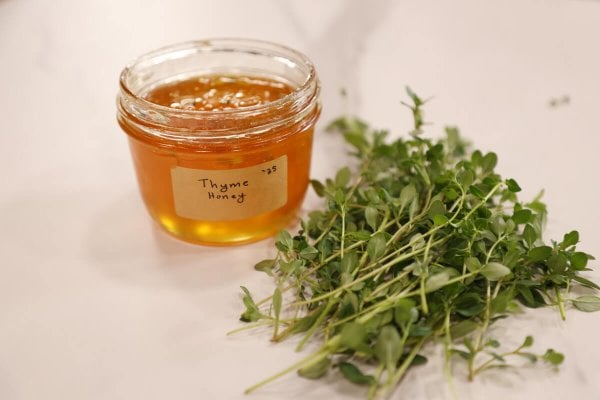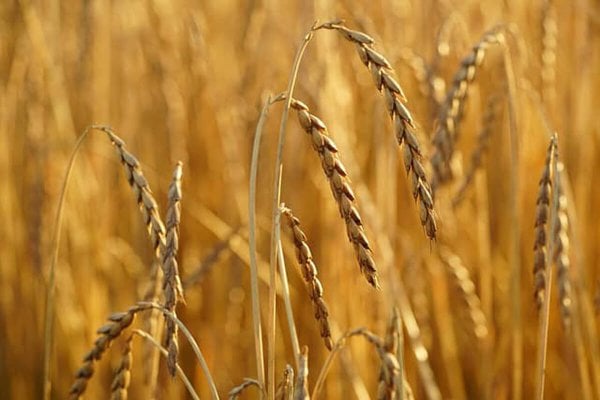






Getting water right in your garden is critical to success and there are a lot of questions. Like… “When is the best time to water?”, “How often should I water my garden?”, “How much water do my plants need?”, and so on. In this post, I’ll answer some of those questions and I’ll dispel some of the watering myths floating around out there and help give you a solid watering strategy.

Just remember, there’s no one hard and fast rule when it comes to watering your garden, mainly because we’re all in different zones with different climates, so the best thing you can do is build a strategy that you think will work for you, learn to read your garden to know whether your crops are getting enough water, and adjust as you go.
Now, to answer your first question- No, I don’t water our large garden with a can like in the photo above! I was just giving a few plants a little special love in that one. 😉
How Much Water Do My Plants Need?
On average, about one inch per week is sufficient for most home gardens. Sure, if you’re looking into specific species and varieties, everything is going to require a little bit more or a little bit less, but it’s really hard for the home-gardener to meet the demands of each individual crop.
What you do need to consider are your soil type and climate. If you have sandy soil and live in a hot windy climate, it is going to take more water, even if you are drip or flood irrigating. If you live in a wet humid environment with loamy soil, you will probably use less water. The 1-inch rule gives you something to measure and then you can adjust accordingly for your environment.
Too Much or Too Little Water? How Can I Tell?
How do you know if your plants are getting enough water? Or too much? Well, your plants are going to wilt and the soil will be dry if there is not enough. And if you are watering so much that you are getting fungal issues, or water is sitting on the surface constantly, you are probably watering too much. Besides these surface observations, you should regularly dig into your soil and check it several inches down. You want it moist all the way down.
Now it is ok if the top ½ to 1 inch dries out, over the course of a week, but not more than that. If your soil is dry more than an inch down, you need to increase water.
Watch out though, often people check the soil an inch down and see the soil is damp, so they think they are watering enough, only to wonder why their plants look thirsty. Make sure you check SEVERAL inches down, regularly. Often, you are putting just enough water down to keep the surface moist, but it is not enough water to soak in deeper and your soil is drying out down lower. We had this happen to us in an unseasonably hot year and what we normally did wasn’t working.
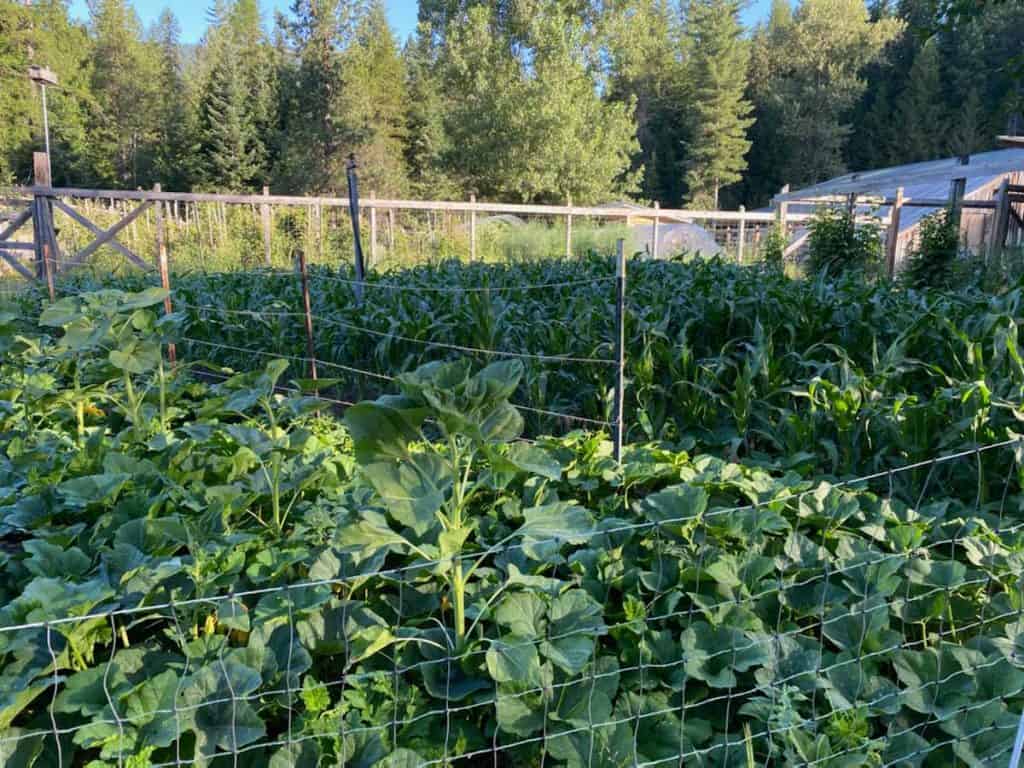
How Often Should I Water My Garden?
If we’re going off of the recommendation above of about one inch of water per week, then you’ll need to gauge how often to water based on your weather, climate, and soil. I generally like to give a good soaking once a week. This is easy to track, gets the plants what they need, but also encourages them to send roots out looking for water and nutrients while building some resilience to stress.
Now, if you have very sandy soil with high evaporation, high winds, and high temperatures you’re probably going to need to water a bit more often and use more water.
But if you’ve built up high-quality soil, as we’ve done here by building up raised garden beds, then your soil should hold onto that moisture for longer periods of time, and it’s truly best to water less frequently but more deeply.
You want to encourage those roots to grow deep down into the soil and to search for that water, this makes your plants stronger and more drought-resistant. This method is also thought to put just enough stress on the plants that they grow more resilient, but also more flavorful!
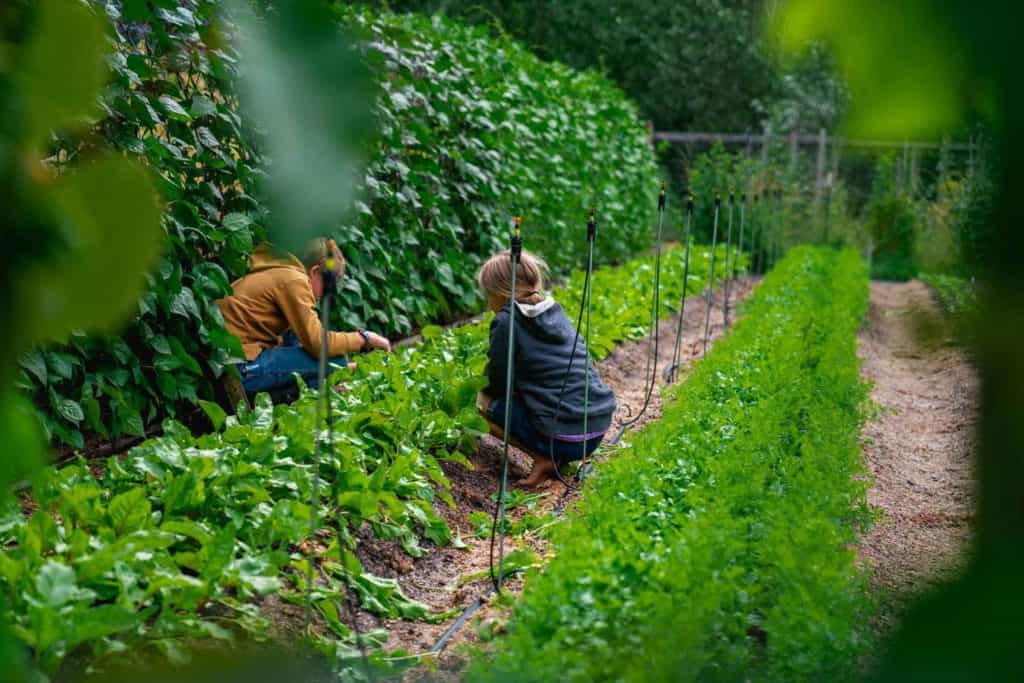
When is the Best Time to Water the Garden?
It amazes me to drive around and watch large farms, and some homeowners watering overhead during the day in the heat of the summer. To me, this is a waste of water, and the plants are not getting what you have measured out due to loss through evaporation and wind.
On the other hand, I have heard many times that you never, ever water at night. For the most part, this is a myth. Yes, there are circumstances where you generally should not. If you live in a humid environment and your soil holds a lot of water and you don’t have a lot of moving air, then you want to be careful as you could create an environment where you’re encouraging fungus and mold issues. But, for a lot of us, watering in the evening or at night can be beneficial as it allows the water to soak in.
For the most part, I like to water early in the morning before the sun is up if possible, but in our environment, watering in the evening or at night is fine and it does give more time for the water to soak in before the heat of the day starts the evaporation process. When it gets really hot here, like this summer, I switch to evening watering so there is more time for the water to soak in. This is not a problem in our environment.
Again, be flexible, come up with a plan that works for you and your garden, observe and adjust. The reality is that every season is different, your soil is going to change over time, hopefully for the better if you are building healthy soil, and your watering needs will have to be adjusted.
When To Avoid Watering?
Avoid watering in the heat of the day and when it’s windy. This is a waste of water and may leave you thinking you are giving your garden enough water when in fact 80% of your water might be evaporating into the air. And like I said, if you live in a damp humid environment, then avoid watering at night.
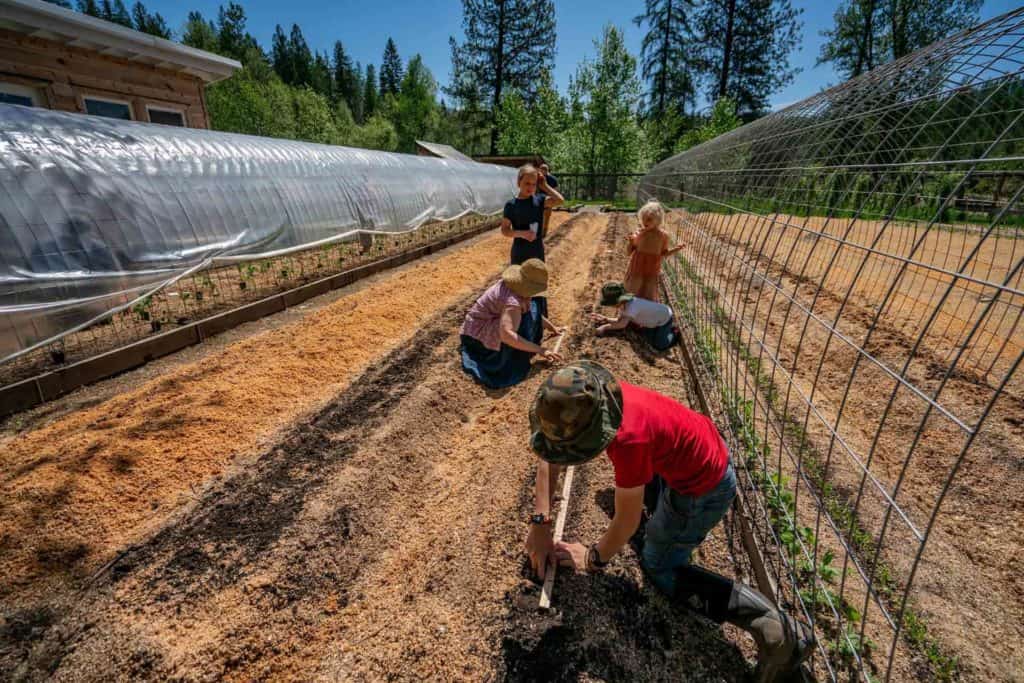
When to “Break the Rules”
The one caveat to these watering practices is when you’ve planted seeds directly in the ground…as opposed to starting indoors and in pots. In order to get seeds to germinate, they need frequent shallow waterings.
The rule here is to always keep the surface moist until those seeds have sprouted and gotten roots down. I do this by keeping my regular watering schedule and then lightly watering seeds several times a day. How many times will depend on how fast that surface soil is drying out. When it is hot and I am starting seeds in the ground, like carrots and lettuce, sometimes I have to water lightly 3-4 times a day until they have sprouted!
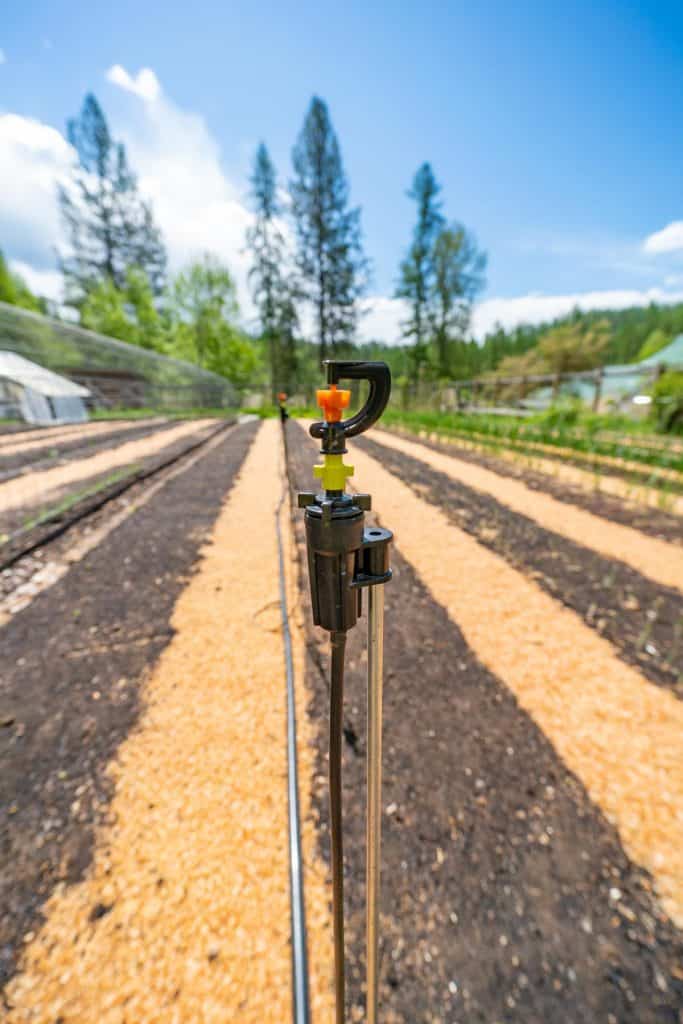
What Type of Watering System is Best?
Here on Riverbend, I like to overhead water (more about our farm watering system at Riverbend). It’s the form of watering that mimics nature the most, and I think the plants benefit from water on the leaves, not just at the base.
But there are a lot of situations where a soaker hose, drip irrigation, or flood irrigation may be a better solution for you. If you’re in a dry hot environment, or you live in a windy location, those are all things to consider. They help you make much better use of your water and not waste so much.
I would still try to overhead once in a while though. That kind of environment tends to have a lot of dust and this covers the leaves, and in my opinion, has an effect on photosynthesis and transpiration, both of which are critical to your plant’s function.
If you are overhead watering, be careful about how you go about it. Sprinklers that shoot large drops of water a long distance can be hard on your soil and plants and can disrupt sprouting seeds, knocking them out of the soil and causing them not to germinate. It can also be hard on mature plants and pollination. I like to mimic a gentle rain, not a thunderstorm!
Two summers ago we installed a micro watering system that waters like a gentle rain and I love it. I can use it to start seeds like carrots and lettuce that are easily disrupted, in the ground and still deep water the garden. It is also easy to target a specific area so that I am not throwing water in areas that don’t need it.
Like anything in gardening, remember that you need to be involved, you can’t just set it and forget it. Take what you know and have learned here, create a plan, put it to work, then observe regularly and adjust as the seasons, what you grow and what you learn changes!

More Gardening Related Posts
- Instant Garden in Under Three Hours
- Back to Eden Gardening with Paul Gautschi
- How to Reduce Weeds in the Garden
- My Favorite Tools for Gardening (And How to Care for Garden Tools)
- 20 Vegetables You Can Plant in Late Summer
- Spring Garden Planning Tips & Tricks
- Get a Jump Start on Early Spring Gardening – Pantry Chat #75
- How to Build a DIY Hoop House (Greenhouse)
- When to Start Seeds Indoors
- Seed Starting Problems (& How to Fix Them)
- 12 Things You Must do to Prep the Garden for Winter
- Making Raised Garden Bed Rows & Super-Charging Your Soil
- Get an Instant Garden (Vertical Garden Planter)











